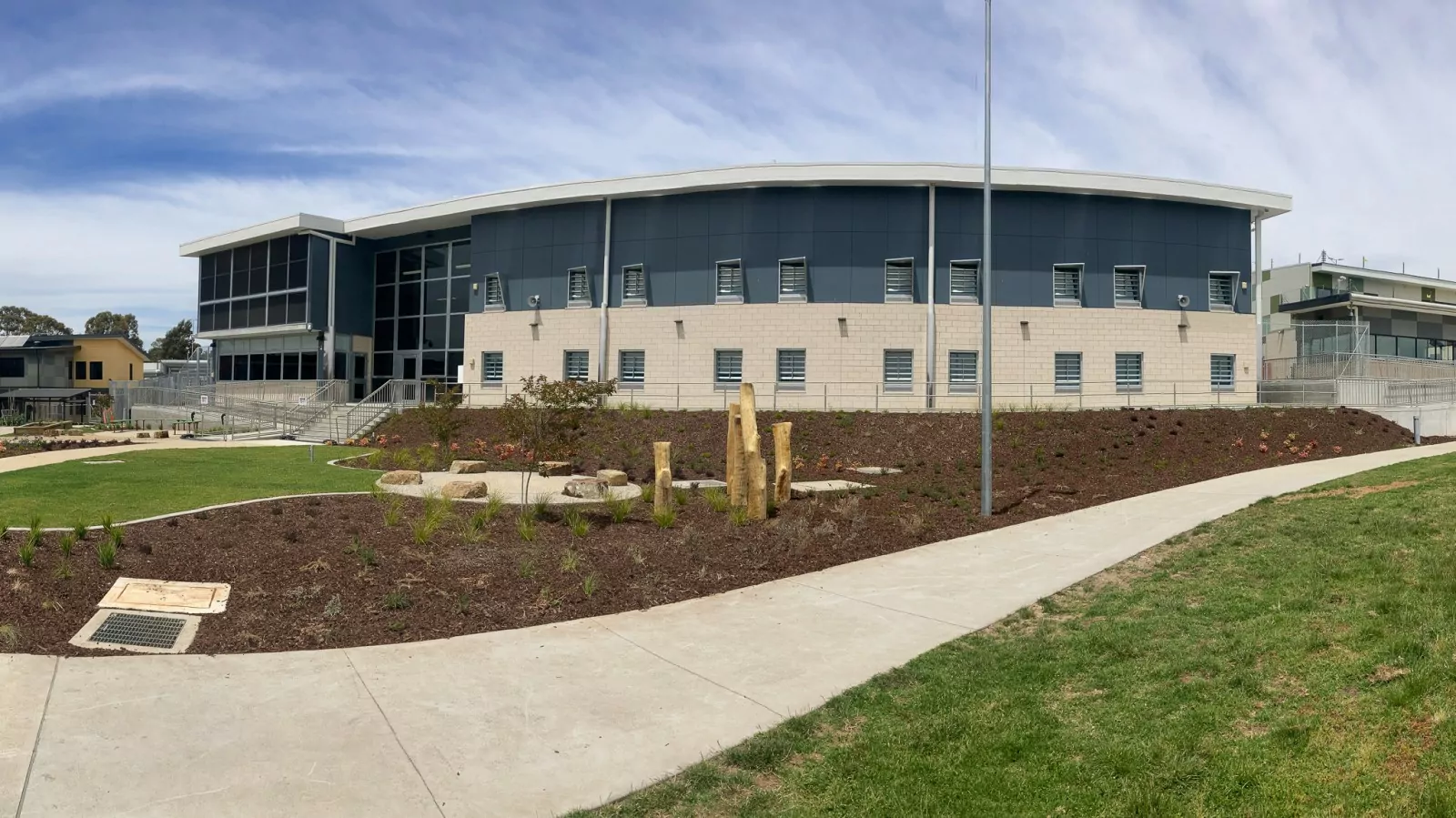Building in a live prison environment

Middleton Prison in Central Victoria is one of five prisons being upgraded as part of the Victorian State Government’s Prison Infill Expansion program. Construction at Middleton is being delivered by Fairbrother and overseen by the Community Safety Building Authority, part of the Department of Justice and Community Safety.
Upgrades to the restricted-minimum security facility consisted of constructing a new accommodation facility that expands capacity by 39 beds. In addition to the added accommodation spaces, the project also included the conversion of an existing indoor basketball court to facilitate new office space, educational, and program facilities. A new commercial kitchen, new sally port, and security upgrades were also in the scope of the project.
“The whole project was about lifting the security rating for Middleton Prison and expanding the prison to be able to take more patrons” James Atkinson, Project Manager with Fairbrother said.
“There was a combination of physical and electronic hardening works undertaken, as well as the new accommodation building and providing additional infrastructure to support it – a new kitchen and converting the old basketball court into a program space and office space.”
Construction of the accommodation facility utilised prefabricated steel modular cells. Manufactured off site, modular cells provide a standard form and function, with offsite construction promoting worker safety and improving cost and quality while limiting potential disruptions through the complications of working in live prison environments.
“Because you’ve got the basic fundamental bones of the building … it comes down to how you configure the internal spaces and how it needs to be used by the location,” Patrick Smardon, Senior Architect with Guymer Bailey Architects said. “We can’t do anything with the cell, so it was really just trying to soften it as much as possible, creating the day room around it, and looking at how that day room interacts with the outside space to get that indoor-outdoor connection.”
Using prefabricated, modular cells required an element of back-to-front thinking when it came to construction of the accommodation facility, constructing the interior and then building the outside around it.
“This is the first project that’s been completed with buildings handed over with this type of steel-framed modular cell” Mr Atkinson said. “All we had to do was connect power and water and you basically had things functional and ready to go. So, it was just a matter of building around the outside and tying everything else into it.”
Making use of this style of construction also improves efficiency within the construction project, saving time, cost, and reducing on-site waste.
The second major aspect of this project was the conversion of an existing indoor basketball court into program and educational spaces for inmates, and office administration space for staff. The gymnasium was converted to a two-storey space with minor strengthening being performed on the slab as well as the excavation and construction of a lift shaft for accessibility.
“We really tried to develop a professional and healthy workspace, somewhere they can feel their best and do their best.” Mr Smardon said.
“There’s been positive feedback from our staff,” Simon Early, Senior Project Manager from the Community Safety Building Authority in Victoria said. “Many have said that it’s a great environment for the staff who work in there.”
Working in a live prison environment, the Fairbrother team at Middleton faced a far more complex work environment than most people would be used to. On a daily basis workers passed through metal detectors and x-rays, underwent vehicle inspections, and were stopped for multiple head counts throughout the day.
Added onto that was the ongoing challenge of managing COVID-19 restrictions in Victoria over the past two years. This required the additional construction of a dedicated shed for testing workers prior to entering the site and managing isolation requirements that changed regularly.
At peak, there were almost 100 workers on site, which brought about its own set of logistical challenges. All employees were required to work under escort, with as many as 15 escorts being required daily at the peak of construction. With limited access to mobile phones, many aspects of communication that are taken for granted became fresh challenges for the project.
“It’s almost like going back 20 or 30 years in regard to being more disciplined with programming and coordination,” Mr Atkinson said. “Everyone’s so used to using mobile phones to relay messages, order material, check the status of things, and respond to emails. You have to really think about your day and your timing.”
A challenging environment can often bring out the best in people, and this project was no exception. Fairbrother demonstrated a consistent team in an environment that often sees significant site team turnover and faced the additional challenges relating to COVID-19 with resourcefulness.
“It’s a testament to the guys and girls on the project as to how they’ve been able to work through the stresses and strains, keep their chins up, and keep pulling through,” Mr Atkinson said. “It certainly has been taxing but we’ll come out of it having learned a lot, and we seem to have gathered a good reputation from it.”
With a few minor items to finalise, the Middleton Prison project is set to be completed later in 2023.